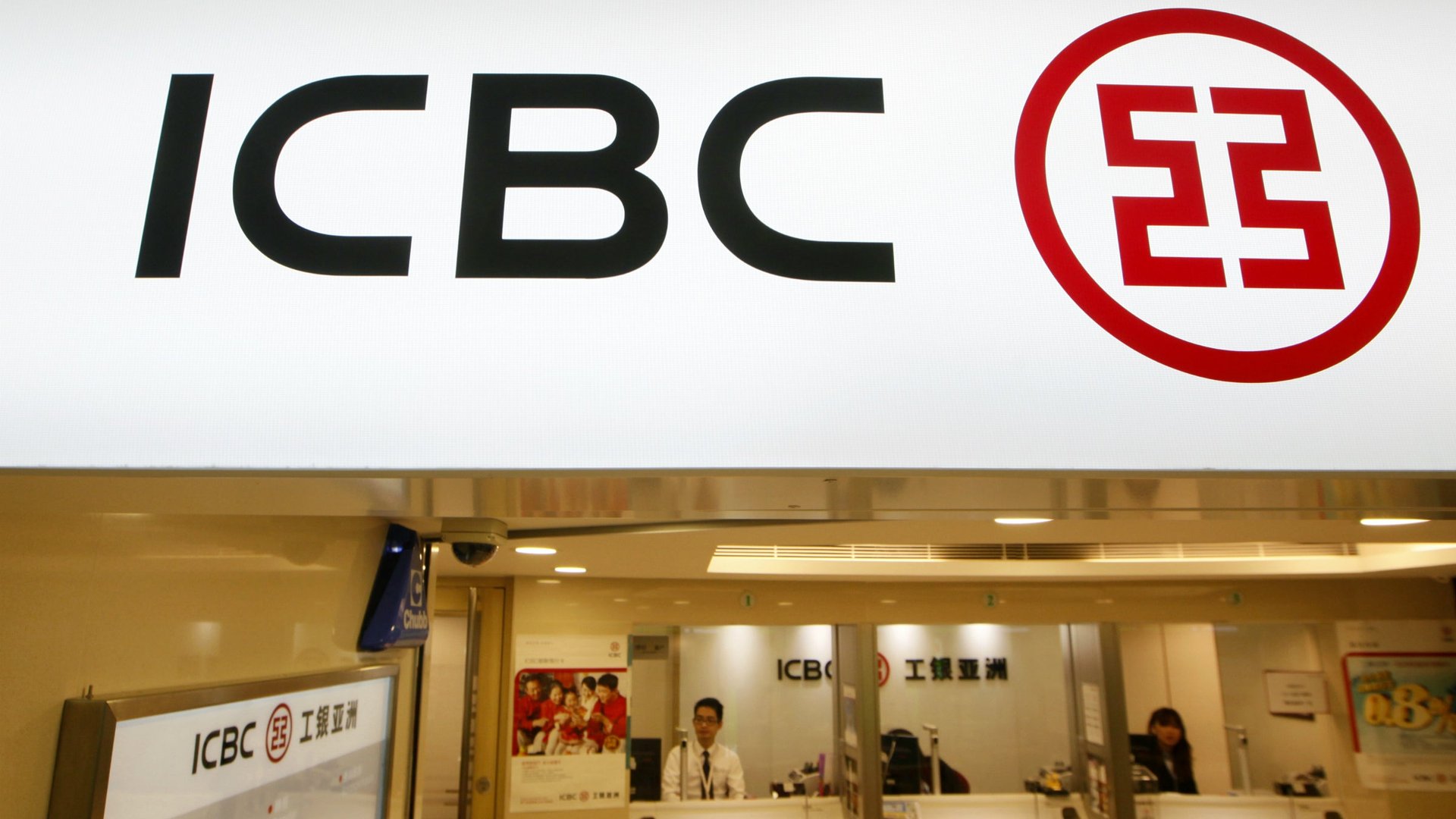Goldman Sachs casts a vote of no confidence in Chinese banking
Goldman Sachs ended a seven-year investment in the Industrial and Commercial Bank of China on Monday, selling its remaining $1.1 billion stake in the world’s largest bank by market value and most profitable lender for HK$5.50 per share—2.5% less than the market’s closing price.


Goldman Sachs ended a seven-year investment in the Industrial and Commercial Bank of China on Monday, selling its remaining $1.1 billion stake in the world’s largest bank by market value and most profitable lender for HK$5.50 per share—2.5% less than the market’s closing price.
ICBC reported a 12% increase in first quarter profit last month, and extended 25% more loans than in the same period in 2012. So why is Goldman selling?
Tarnished dreams
When Goldman (and private equity funds and senior partners who invested alongside it) bought its initial stake in ICBC of around 5% in 2006 the investment was seen as a strategic move. Charles Geisst, a finance academic, told the Wall Street Journal that “American banks wanted to get a piece of Chinese banks because they knew the Chinese were quite capable of avoiding Wall Street to raise capital. This was a way of getting in.”
But that hasn’t quite panned out. Goldman’s fees in China for services such as underwriting have been lackluster at best, and it has been steadily selling off bits of its ICBC stake. It isn’t alone—UBS, Royal Bank of Scotland, Bank of America, Citigroup and HSBC have all divested stakes in Chinese banks recently.
One reason that international banks have been running for the exits is that, when they go into effect next year, international banking regulations known as Basel III will make holding minority stakes in banks more expensive.
Yo-yo stock
But Goldman has been selling down its ICBC stake since long before Basel III loomed large. Although Goldman has made almost triple its initial $2.58 billion investment in its six ICBC sell-offs, the stock has at times been volatile, whipsawing Goldman’s own profits and losses along with it. For instance, in 2010, Goldman made $747 million on its ICBC stake and then lost $905 million in the following year.
Dark clouds on the horizon
Then there is ICBC’s financial outlook. Like other Chinese banks, its profitability has been slowing of late, after having raked it in during the boom years of China’s massive lending-driven stimulus. On top of that, regulators are increasingly worried about bad debts piling up in the sector. Though ICBC’s vulnerability to bad loans still looks to be minimal—its ratio of non-performing loans to overall lending was 0.87% in the first quarter of 2013, lower than the sector average of 0.96%—it’s nonetheless rising. And some, like short-seller Carson Block, say that that looking at that metric alone risks missing a more worrying picture. “We believe NPL figures greatly understate the potential scope of the problem of poor quality loans,” Block, who founded Muddy Waters research group, told Bloomberg. “Our concerns implicate loans throughout the economy—both public and private sector.”